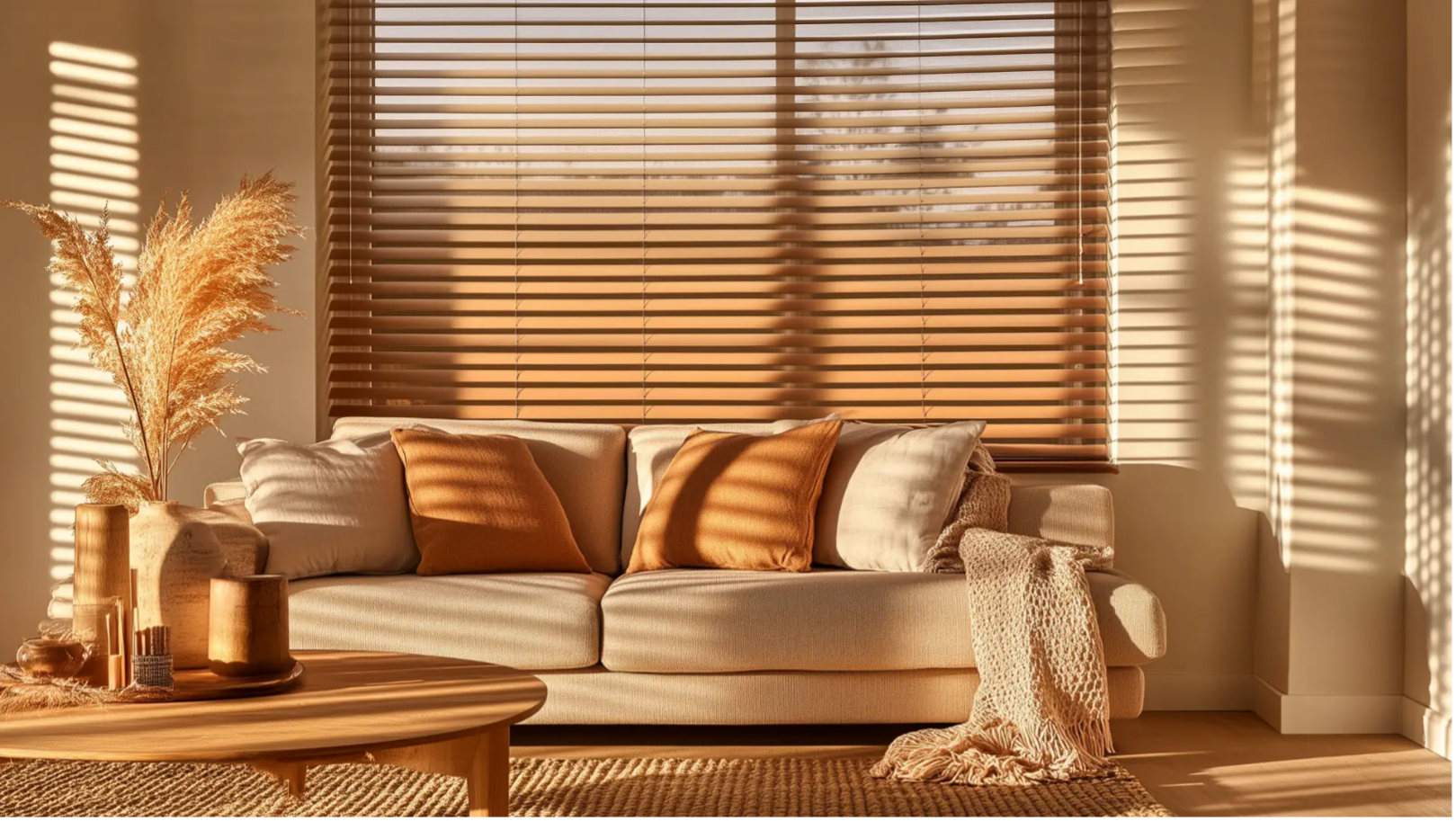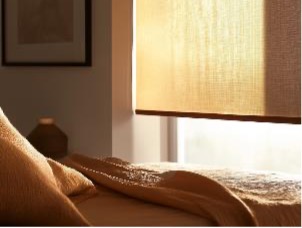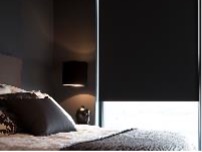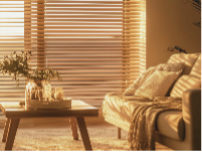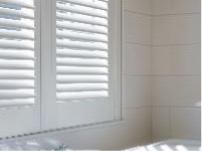At NZ Blinds, our detailed Measuring and Installation guides put the power of new blinds in your hands. The only question is which blinds you’ll choose!
Making the best decision out of so many available window treatment options can be challenging. Which type of blinds will best suit the purpose of your room? Which will provide the right balance of natural light and privacy? Which colours and materials will suit your interior decor and aesthetic? Wouldn’t this all be easier if you could speak with someone who’s gotten it right before?
We caught up with three local interior design professionals for insights, instincts, and wisdom to make smart design choices when selecting your new blinds. Our NZ Blinds Design Guide for 2025 will help you consider every angle of this important choice, from learning how to choose blinds colours to unpacking which blinds are best for bedrooms. From the design factors to installation, start your DIY journey to new, quality blinds below!
Table of Contents
The key factors impacting your design choices
- Natural light
- Interior colour schemes and aesthetics
Planning your window treatment installation
- Plan early
- Measure twice
- How to use Pinterest like an Interior Designer
- Balance trends with evergreen style
- Layer your blinds or pair them with curtains
How to choose blinds for each room: practical advantages and tips
- Best blinds for bedrooms
- Best blinds for living rooms
- Best blinds for bathrooms and kitchens
Where each type of blind is most useful
- Roller blinds
- Sunscreen duo blinds
- Faux Wood Venetian blinds
- Wood Venetian blinds
- Honeycomb blinds
- Shutters
The key factors impacting your design choices
Natural light
Commercial Interior Designer Lauren Schott says that tracking the sun is helpful when picking DIY blinds. She suggests that you “actually sit in that space and see how the sun moves” and note “how much light is coming in.”
Having studied design in South Africa before travelling and working across Asia, Lauren says the sun will help you determine the right level of opacity in your blinds. A higher opacity level may be necessary if the space enjoys little natural light, providing the necessary privacy without making the room feel dim.
A room flooded with natural light for much of the day may be better suited to venetian or blackout blinds, as they may need to provide light control during particularly bright hours of the day.
Following the sun informs what type of blind suits the room the most and, if applicable, the desired level of opacity.
Interior colour schemes and aesthetics
Colour Consultant and Interior Designer Christine Park also emphasises the importance of looking at colours in a room and noticing the light’s impact.
“I try to focus on the natural light and how that actually affects the paint colour on the walls.”
Having worked with individual clients and businesses such as Dulux and Resene, Christine can pick a colour out of a hundred to find the perfect match.
She notes that neutrals, like whites, are susceptible to looking quite different than expected when viewed in isolation. A specific colour you like at a friend or family’s house might look different in your own home.
“In the morning, you have your natural light, but then at night you need an artificial light.”
Viewing blinds in situ is key here, taking into account the differences between natural and artificial lighting in interior design. Picking out a specific grey or brown can be tricky in isolation, but viewing them in the context of your room will reveal their individual nuances. This is because the colour of the existing furniture and a room’s colour scheme also impact how blinds look. A white or grey paired with orange may look more yellow than intended. White and grey colour options are best viewed in situation to avoid disappointment.
Planning your window treatment installation
Plan early
With your research complete and the windows measured, it’s time to start looking at your options. You might fall in love with one style and add it to your cart, only to question it the next day and reconsider a different set of blinds. Indecision can quickly lead to decision paralysis. As Christine notes, it’s common to have second thoughts during the interior design process, so be mindful and prepared for this along the way.
Another potential snag is the following scenario: you’ve narrowed down your options and presented them to your partner. All the measurements are perfect, and you’re confident this is the right decision. It’s time to commit, but watch out: it’s a last-minute disagreement. Interior design choices won’t always please every person involved, Christine explains.
Decisions may stall out due to disagreements between spouses or other people involved. Decide upfront who will be making the decisions for which part of the interior design process. Is it a fifty-fifty split? Does the person paying get the final say? This designer tip for home decorating could save you from going in circles in the future, so have these conversations early.
Measure twice
Behind every DIY success story is careful planning. Whether you’re the go-to DIY person in your family or it’s your first time measuring and installing your blinds, taking precise measurements is key. Michala recommends measuring carefully and accurately, and not just in one place either.
“Always measure in multiple places to ensure accuracy, especially if your windows aren’t perfectly square.”
You’re likely to get different numbers depending on where you measure, so take more than one measurement along the width and height to get the most accurate dimensions. Measuring depth is also handy, as it gives you the option of mounting the blinds inside the window frame.
Tips for making smart design choices
How to use Pinterest like an Interior Designer
Pinterest is the not-so-secret weapon of every designer and artist. Used by professionals and hobbyists across virtually every creative industry and discipline, Pinterest is an extensive source of visual inspiration that Lauren recommends for DIYers. As a self-described visual discovery engine, Pinterest allows you to get lost and embrace the fun of being inspired. Pinterest pulls from all corners of the internet based on your search terms, showing you similar images for each image, too.
“You start somewhere with an idea, and then over time, it’ll give you a whole bunch of other ideas that’s related to what you initially typed in the search.”
Images are saved by ‘pinning’ them, and organising these to different boards is where the platform truly shines. This could mean having a board for different rooms, such as the kitchen and living room. Creating a board that illustrates your vision is also helpful for sharing how you picture the space and presenting multiple options for window treatments and other interior design elements.
Balance trends with evergreen style
Trends in the interior design world are fast-paced and fun to follow. Whether it’s Resene’s Colour of the Year or a new bedroom aesthetic on social media, new trends are emerging every day.
Following these trends or taking inspiration from them may be tempting when planning an interior refresh, but when it comes to blinds, it’s worth considering something more versatile.
“There are always trends out there,” Lauren explains, and choosing a trendy blind today could mean it doesn’t work with future styles. She suggests sticking with neutrals so they don’t have to be frequently replaced.
Neutral doesn’t mean boring, either. There are plenty of shades to choose from, and even neutrals go through trend cycles, with earthy tones becoming more popular than before. Trends are fleeting, and choosing blinds that work across several trends is a smart solution if you like updating your interior décor regularly.
Layer your blinds or pair them with curtains
If you’re feeling torn between your options, sometimes you can have your cake and eat it too. Michala often combines curtains with blinds for a softer and more luxurious look.
“The blinds provide functionality (light and privacy control), while the drapery adds softness, glamour, and depth to the room.” This is also a good option for bedrooms, for example, where Christine says having multiple layers lets you enjoy the space in both night and morning conditions.
For added versatility, installing a pair of roller blinds — one for sun filtering and one for sun blocking — is also convenient.
How to choose blinds for each room: practical advantages and tips
Best blinds for bedrooms
When it comes to light and privacy control, blinds are the go-to for Michala.
“Blinds are excellent when clients want precise control over how much natural light enters the room. They are also ideal for providing adjustable privacy, especially in bedrooms or street-facing rooms.”
Many people’s bedrooms are their personal sanctuary, and they often reflect their personality. If your bedroom’s style is minimalist or modern, Michala says blinds are a good choice to achieve that “stylish, clean look.”
“Their simple lines and neutral tones can complement contemporary interiors, particularly when you want window treatments to be more subtle or not detract from the overall design.”
Best blinds for living rooms
Every home has a living room that ties the house together. As a space for spending quality time in and just passing through, getting the design right will be important to how your indoor living areas feel. The type of blinds used here will depend on the specific purpose of your living room. Is it for dining, lounging, hobbies, or all of the above? Lauren says that understanding the equipment and items in the space is key to making the right choice.
She highlights duo blinds as a versatile option that gives you “the best of both worlds” and recommends reviewing the technical specifications of each blind, as they vary in nuances based on opacity level.
For Michala, blinds are an ideal choice when a living room has excess heat or glare.
“In rooms like living spaces with large windows, blinds can help reduce glare and manage heat from direct sunlight while maintaining visibility.”
If your living room is used for watching television or doubles as a media room, Christine recommends roller blinds to achieve total darkness regardless of the time of day.
Best blinds for bathrooms and kitchens
For Christine, blinds are best when practical considerations are the biggest priority, like kitchens and bathrooms. These rooms experience high humidity, so durable, moisture-resistant blinds are ideal for maintaining longevity. Michala advises selecting blinds that can withstand the unique conditions of these spaces and are also easy to clean.
In kitchens, dual-layer blinds are particularly useful, offering a block-out layer to manage excess sunlight while providing flexibility throughout the day. For bathrooms, waterproof shutters add a timeless, elegant look, while faux wood and aluminium venetian blinds are also excellent options.
Where each type of blind is most useful
Ready to pick your blinds?
NZ Blinds has been providing blinds to New Zealanders over the past 20 years as an online store. We know that interior design decisions can be tricky and that in the digital era it’s all too easy to fall into the rabbit hole of endless research to explore every option possible. We’re here to make picking blinds simple and answer any questions you may have. Take a step back, immerse yourself in the space you want to adapt to your tastes, and consider what is most important to you.
If layering your window coverings sounds like the right option for you, check out our extensive range of duo blinds, from blackout duo rollers to sunscreen duos. Check out our blinds online and pick up to ten that you like; we’ll send you a blinds sample, and you will only pay for the shipping. Whatever style you’re going for, we’ve got you covered so that you can view your options in person, in your hand, and in the room you want it to go.
We’ve also created a handy flowchart to help you choose blinds based on your interior design and room lighting.
